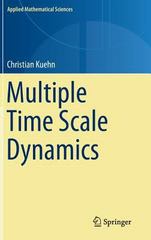Hi I need help with questions 10-15 please
11:261 webassign.net 10. [0/1 Points] DETAILS PREVIOUS ANSWERS TANAPMATH7 9.4.036.NVA MY NOTES ASK YOUR TEACHER PRACTICE ANOTHER Let (x) = 4x5/4 + 2x3/2 + 3x. Find the following (a) f' (4) 35 (b) f'(16) 11. [0.5/1 Points] DETAILS PREVIOUS ANSWERS TANAPMATH7 9.4.042.NVA MY NOTES ASK YOUR TEACHER PRACTICE ANOTHER Find the slope and an equation of the tangent line to the graph of the function f at the specified point. RX) = - 3x2 + 6x+6; (-1, - 2) slope equation y = 12. [0.5/1 Points] DETAILS PREVIOUS ANSWERS TANAPMATH7 9.4.044.NVA MY NOTES ASK YOUR TEACHER PRACTICE ANOTHER Find the slope and an equation of the tangent line to the graph of the function fat the specified point. Rx ) = Vx + Vx: ( 4. 2 ) slope 3/16 equation 13. [0.5/1 Points] DETAILS PREVIOUS ANSWERS TANAPMATH7 9.4.046.NVA MY NOTES ASK YOUR TEACHER PRACTICE ANOTHER et f(x) = x3 - 7x2. Find the point(s) on the graph of f where the tangent line is horizontal. (x, y) = (0,0 [ ) (smaller x-value) (x, y) = (0, - 1372 * ) (larger x-value) 14. [0.83/1 Points] DETAILS PREVIOUS ANSWERS TANAPMATH7 9.4.052.NVA MY NOTES ASK YOUR TEACHER PRACTICE ANOTHER The velocity (in centimeters per second) of blood r cm from the central axis of an artery is given by v(r) = K(R 2 - 1 ) where k is a constant and R is the radius of the artery (see the accompanying figure). Suppose k = 1000 and R = 0.3 cm. Blood vessel Find v(0.2) v(0.2) = 50 Interpret your result. This gives the velocity . of blood 0.2 cm from the central axis. Find v'(0.2). '(0.2) = 600 x Interpret your result. This result says that at a point 0.2 cm from the central axis, the (velocity | of blood is decreasing " at the rate calculated along a line (parallel v . to the central axis. 15. [0.5/1 Points] DETAILS PREVIOUS ANSWERS TANAPMATH7 9.4.056.NVA MY NOTES ASK YOUR TEACHER PRACTICE ANOTHER According to data from a General Motors study, the average speed of your trip A (in miles per hour) is related to the number of stops per mile you make on the trip x by the equation 26.5 10.45 . Compute dA/dx for x = 0.28. (Round your answer to two decimal places.) 84.99 X mph per stop per mile Compute dA/dx for x = 4. (Round your answer to two decimal places.) 1.49 X mph per stop per mile How is the rate of change with respect to x of the average speed of your trip affected by the number of stops per mile? When the derivative of A at a value of x is negative it indicates that A will decrease | if the input increases by a small amount. In this case, if you make 4 stops, your average speed will decrease | if you make an additional stop. 2







